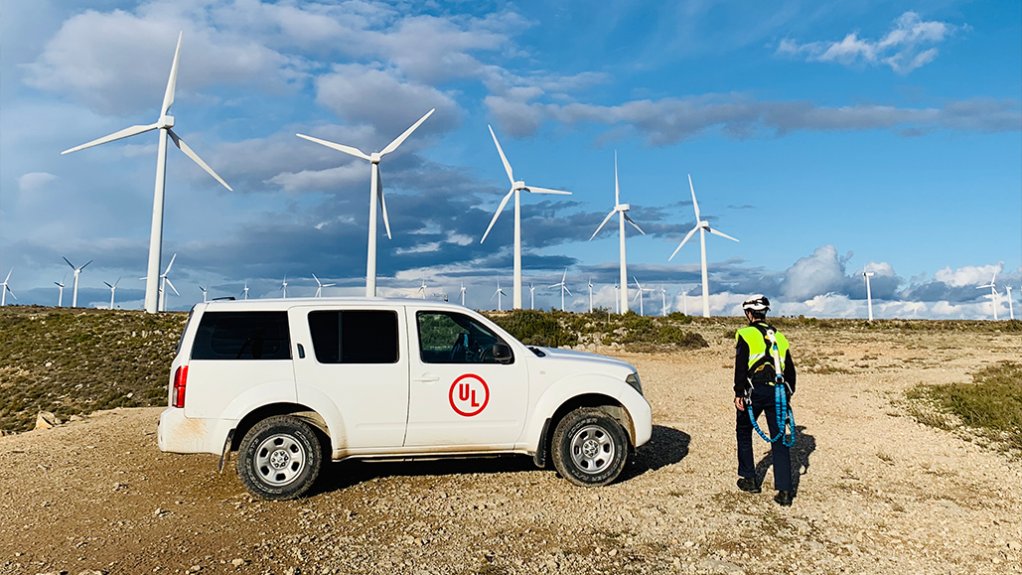Energy project solutions provider UL has released a beta version of its Wind Resource Assessment Platform (WRAP) software, after the company began development on the wind energy yield assessment software last year.
Released to market in June this year, UL renewable energy VP Michael Brower says WRAP ensures that the company is ideally equipped to support the local growing wind energy industry.
The WRAP platform was designed to assist users in quickly identifying potential wind development sites, as well as creating preliminary energy yield assessments.
Brower adds that WRAP is powered by some of UL’s other software tools, including its Windnavigator online dashboard and Openwind windfarm design and optimisation software.
Windnavigator can assist with data input, while Openwind can be used for wind wake modelling, mast adjustments and energy capture analysis.
Brower notes that, since UL’s Windnavigator was released in 2008, the platform has been improved to “become a robust global tool that enables users to access wind speed data, maps, reports and compass statistics”.
Further, users can obtain historical time series data, global reanalysis data and wind resource grid data through Windnavigator.
Brower explains that the data acquired from these software programs can help customers perform crucial early-stage development activities. This includes preliminary energy estimates, turbine tower siting, measure-correlate-predict analysis and the design of preliminary turbine layouts.
He adds that these digital software solutions have assisted UL’s customers in mitigating certain challenges regarding the Covid-19 pandemic and subsequent regulations. These challenges include travel restrictions, which have made it difficult to perform on-site resource assessment activities and inspections.
Consequently, customer demand for remote and online tools has increased, states Brower.
“UL has been increasing its investment in digital solutions for several years, and the Covid-19 pandemic has only accelerated this trend.”
Moreover, he states that the local wind energy industry has grown significantly during the past several years and this is expected to continue.
This year, government has released the Risk Mitigation Independent Power Producer Procurement Programme (RMIPPPP), which allows for the procurement of 2 000 MW for the national energy grid.
Additionally, Brower emphasises that Round 5 of the Renewable Energy Independent Power Producer Procurement Programme is expected to be finalised through the Department of Mineral Resources and Energy this year.
He states that the legislative developments will result in about 6 800 MW being added to the energy grid from wind and solar projects.
“As a leading global technical adviser, we are well placed to provide any technical advice throughout the wind project development life-cycle, as well as technical input in optimising hybrid energy solutions.”
HOMER Acquisition
UL acquired HOMER Energy late last year, combining UL’s experience in solar, wind and battery technology with HOMER Energy’s system design capabilities and distributed energy project database.
“With this acquisition, UL made a strong move to support distributed energy applications, specifically microgrids and hybrid power projects.”
Brower particularly highlights the HOMER Pro microgrid software platform, which is used for modelling isolated village power systems, and isolated or weakly connected grids.
Further, the HOMER Grid software platform has been developed for microgrids in grid-connected settings such as hospitals and universities.
Brower further explains that, in response to Covid-19, HOMER Energy developed Powering Health, a free-to-use Web application (app), in partnership with the World Bank.
The app is a microgrid modelling tool that helps developing countries improve the capacity and reliability of power systems to meet the increased demands of caring for patients during the pandemic.
Brower emphasises that the HOMER Energy acquisition was ideally timed, particularly with the release of the RMIPPPP.
He states that the combination of UL’s advisory services team and HOMER Energy’s understanding of hybrid systems means that UL is well positioned to assist customers in optimising hybrid systems for the RMIPPPP.
“Looking ahead, the integration of storage with wind in hybrid projects is growing fast, and UL is ready with industry-leading battery expertise to support that development,” he concludes.
Empowering Trust UL Southern Africa
Edited by: Zandile Mavuso
Creamer Media Senior Deputy Editor: Features
EMAIL THIS ARTICLE SAVE THIS ARTICLE
ARTICLE ENQUIRY
To subscribe email subscriptions@creamermedia.co.za or click here
To advertise email advertising@creamermedia.co.za or click here













